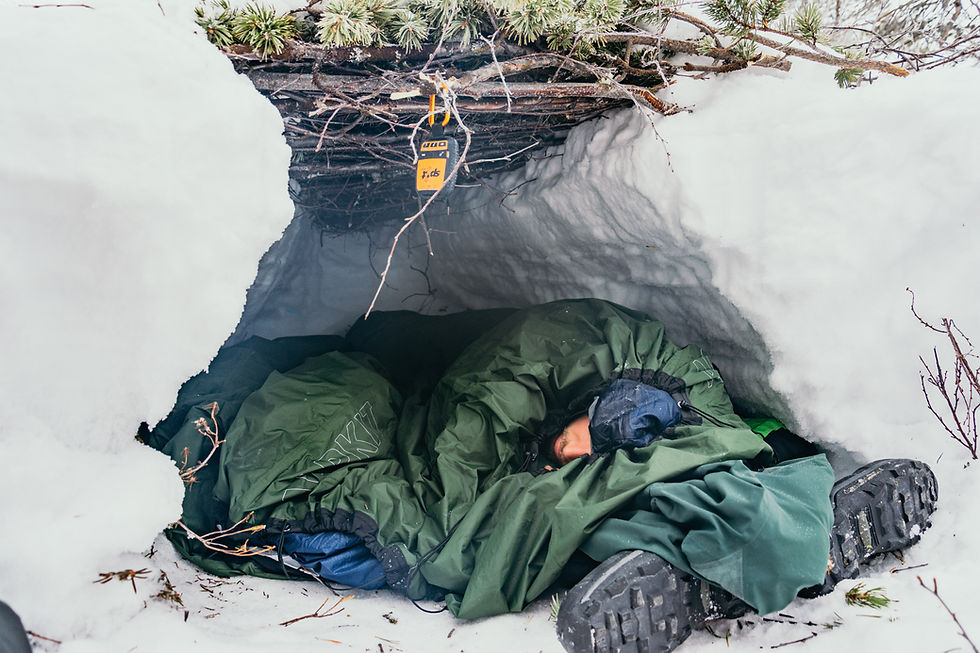How to buy the perfect sleeping pad
- Jun 1, 2021
- 4 min read
Updated: Mar 28, 2022
No need to lose any sleep over it anymore. Whether it's for sleeping in or taking a quick nap, here's your perfect guide to sleeping pads!
Your portable bed has two main functionalities: cushioning and insulation. While sleeping on a soft surface may be the most obvious reason for buying a pad, when camping out in the cold, you'll be needing that extra insulation. When going out to get a pad, don't be afraid to ask about the different models and test them out before buying. Every person is different, and will use the pad in different circumstances. Explain your situation and get a better view on the amount of cushioning you'll need, the necessary length, pack size, etc.
Listed below are a few different models that are on the market.


Air cushioned pads are often textured and have different air compartments that ensure a good distribution of your body weight. There are several ways to inflate them. While you can manually blow air into most models, some brands also offer small electrical pumps, stuff sack pumps or integrated hand pumps.
Pros: The insulated models can be used during the entire year. They are comfortable and lightweight.
Cons: They are expensive and can be punctured during your trip (although most pads come with a repair kit).
Foam pads have a dense foam filling. The air cells in the foam offer an excellent insulation.
Pros: They’re very lightweight, durable and - most of all - inexpensive. They can be used in any conditions and don't soak up any water (so you can store them outside your backpack without extra protection). Most designs are meant to be rolled up but there are also foldable designs available that are a bit easier to store away. You can adjust the inflation for more comfort.
Cons: They are not so comfortable when you sleep on your side. If the ground is uneven you are


Self-inflating pads offer a combination of foam and air insulation. They're very easy to use. All you need to do is open the valve, and the pad will inflate automatically because of the vacuum between the foam cells in the pad.
Pros: They're self-inflating! No more getting-out-of-breath when you're ready for bed. Also, they're very comfortable and offer proper insulation.
Cons: They are the heaviest of all pads and they are typically expensive. Just like the air cushioned ones, they can get punctured during your trip (most pads come with a repair kit).
Whether you choose an air cushioned, a self-inflating or a foam pad, there are a couple other things that you'll need to bear in mind.
Insulation: R-Value
On many pads you will find an R-value. The higher the value, the more efficient your pad is at retaining heat. This value is also used for the insulation you would buy for your house.
If you camp out on a tropical summer night, you may not need a high R-value. When temperatures drop, however, you should definitely consider insulated pads. It may not sound very logical, but you'll suffer most heat loss because of a cold surface, rather than through your sleeping bag. That being said, it's still very important to have both your sleeping bag and your pad adapted to the climate of your camping destination.
Body temperature loss during the night varies a lot between people. Some people barely ever need to worry about getting cold, while others' body temperature drops drastically during the night. If you easily get cold during the night, I suggest to go for the highest R-value you can afford. Studies have shown that especially women lose a lot of body heat during the night. That's why, other than the size of pads, there's often also a difference in R-values when brands offer both a man's and a woman's model.
Length
Your sleeping pad should match your length perfectly. Too big means unnecessary weight, while too short will leave you cold at night. Some hardcore lightweight backpackers choose insulation pads that don’t support their legs (and that sometimes even have holes in them), but unless you're very experienced and weight is your main criterion, you'll want a full sized pad.
Width
Are you a calm sleeper? Or do you roll across the tent during the night? If you tend to sleep on your side and switch sides a lot you might want to go for a wider pad.
Shape
Most pads have the typical mummy shape, but there are also some rectangular pads available.
Keep in mind that they need to fit your tent. If you have hiking tent that’s narrower on the feet, you definitely want to go for a mummy shaped sleeping pad. Typically, they're also lighter and more compact.
Texture
Some sleeping bags tend to slip off sleeping pads pretty easily. It’s better to look for a pad with a textured surface. The ground is never perfectly horizontal and you don’t want to wake up next to your pad in the middle of the night. This point is especially important for those who are restless sleepers.
Remember that a sleeping pad is an important part of your comfort during your camping trip. You will use it almost 8 hours/day, and a good night's rest determines your energy levels the following days, so it’s totally justified to spend some extra money on it.



Comments